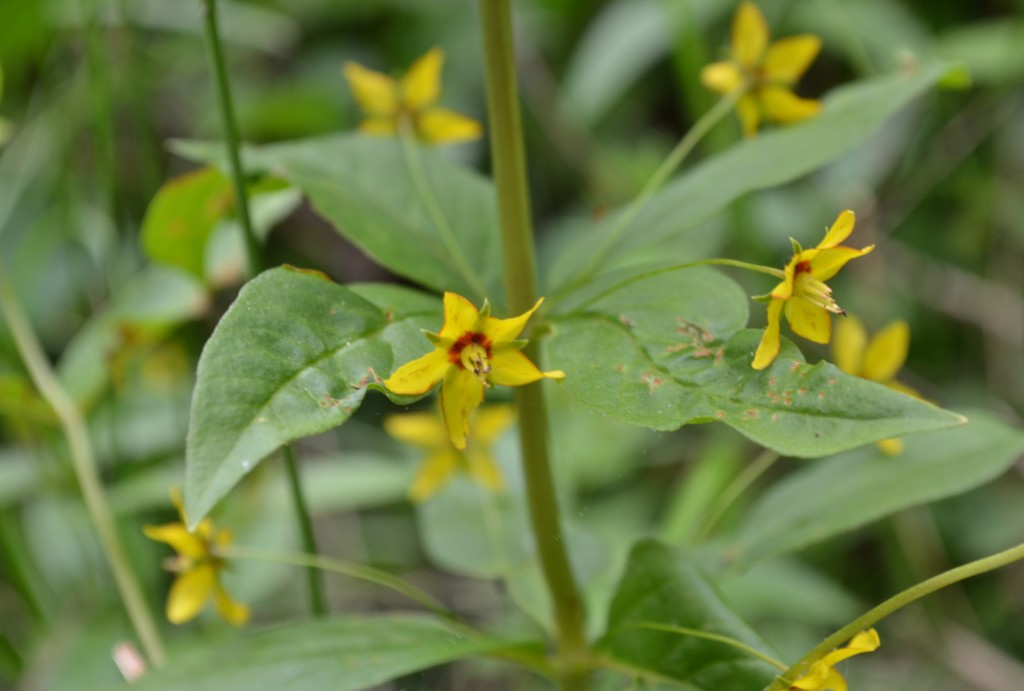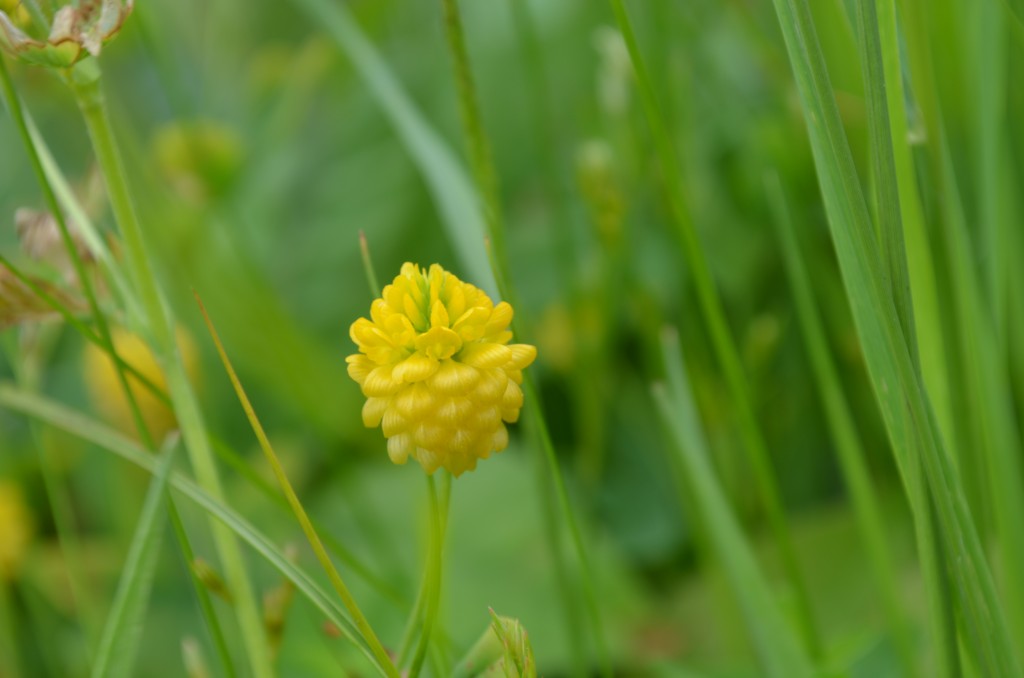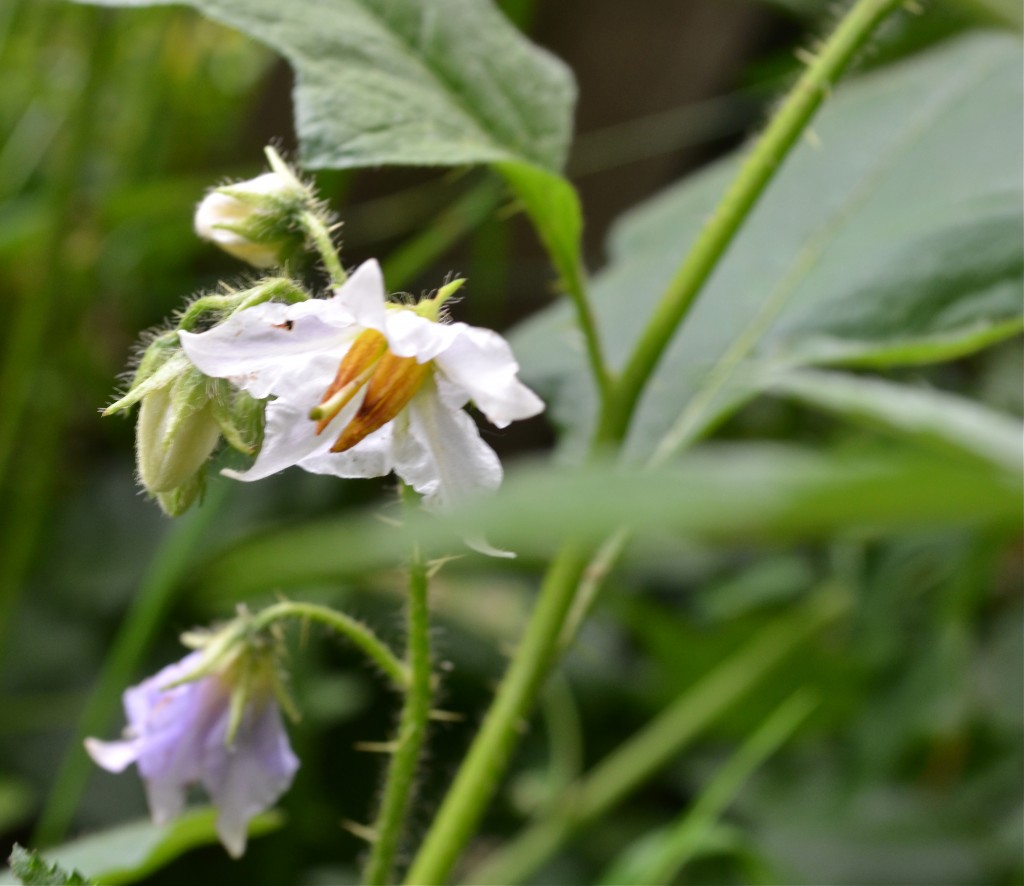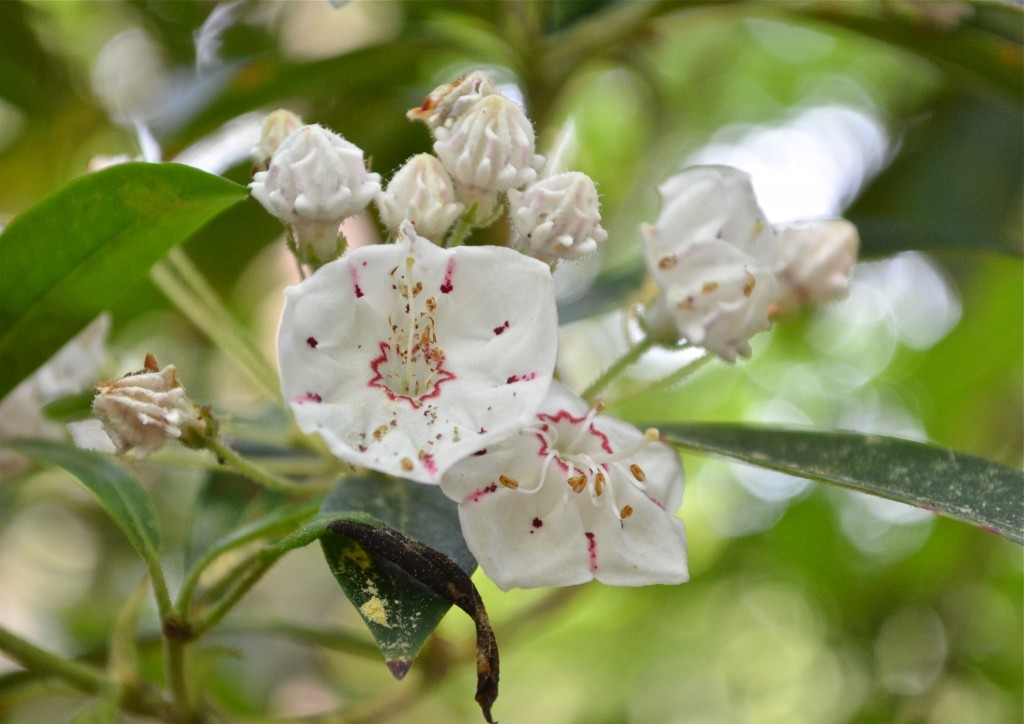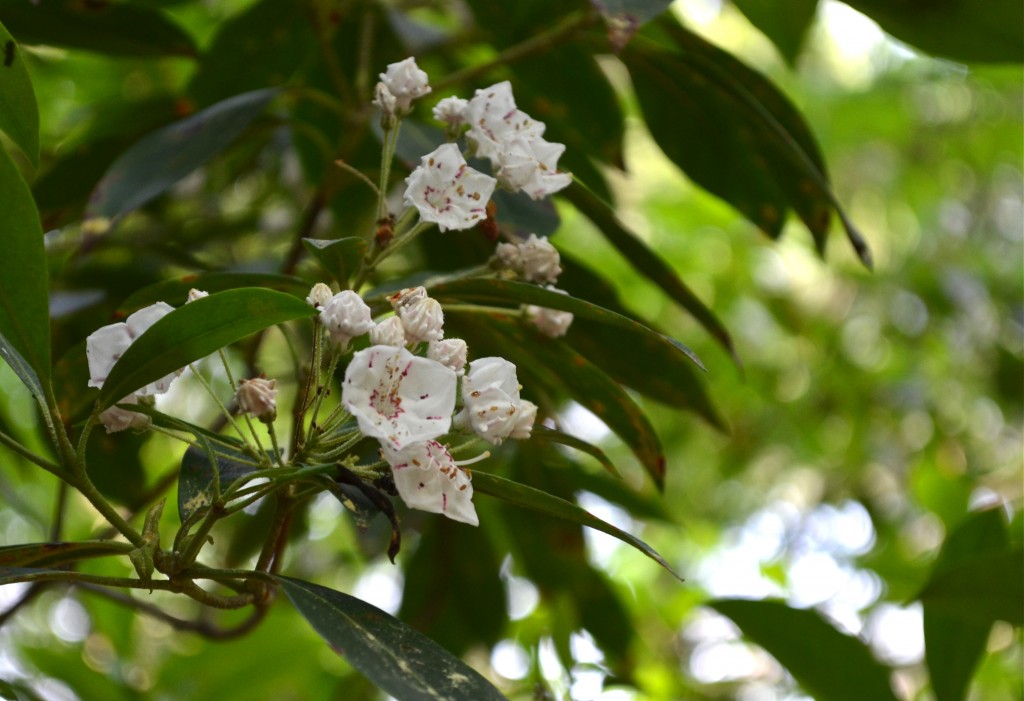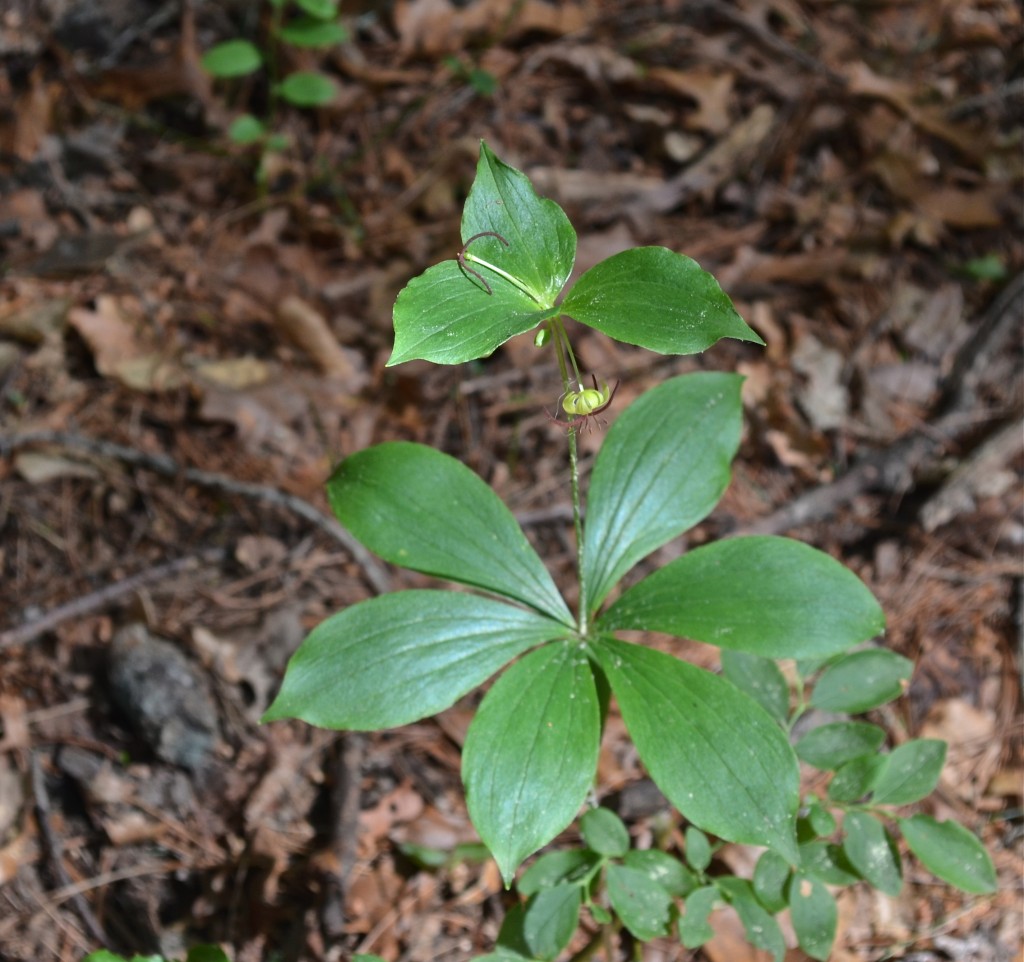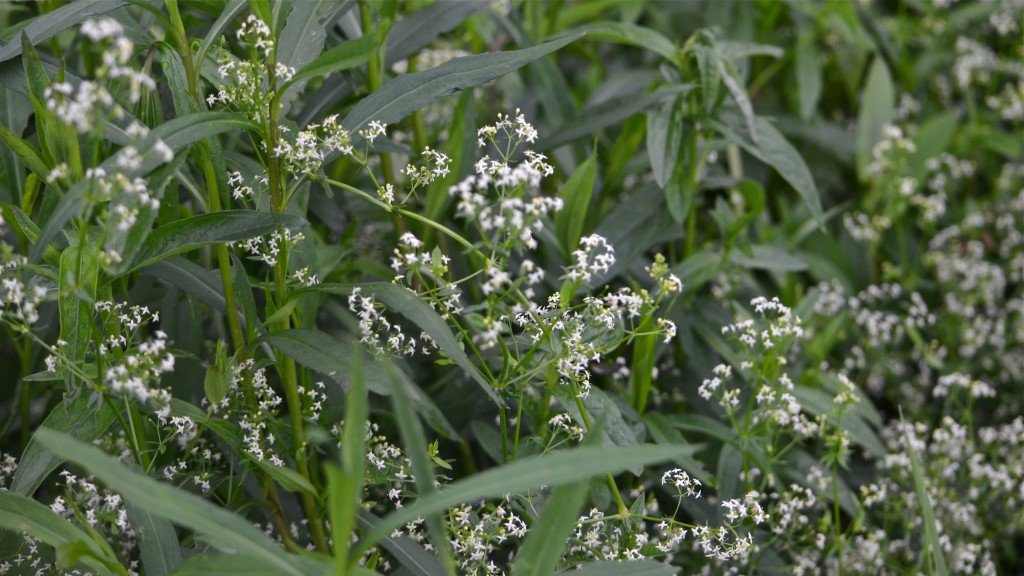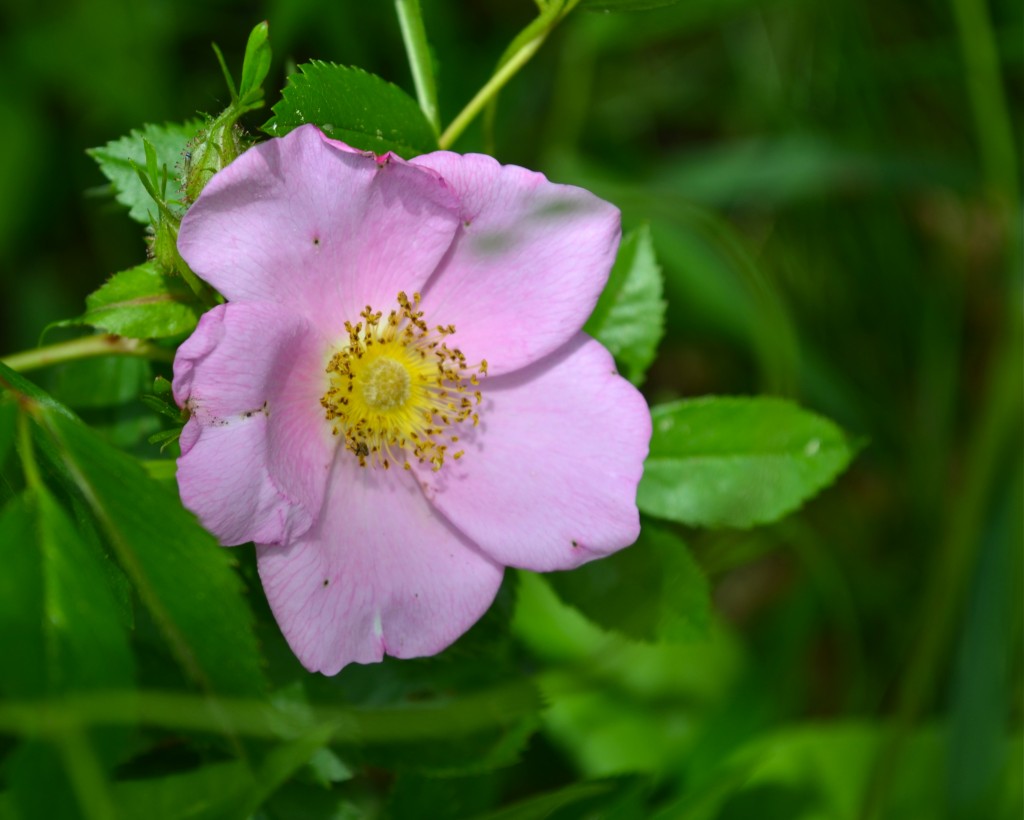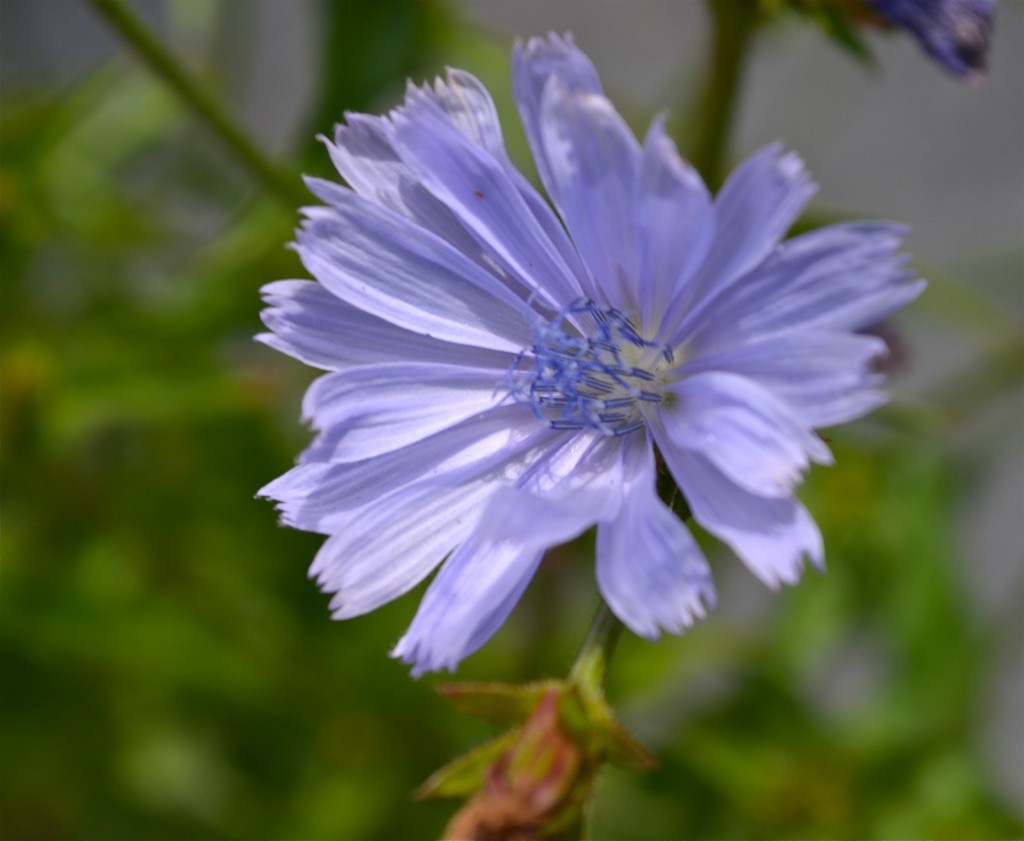When Indian Pipe is first emerging, it looks like a few Q-Tips buried up to their eyebrows.
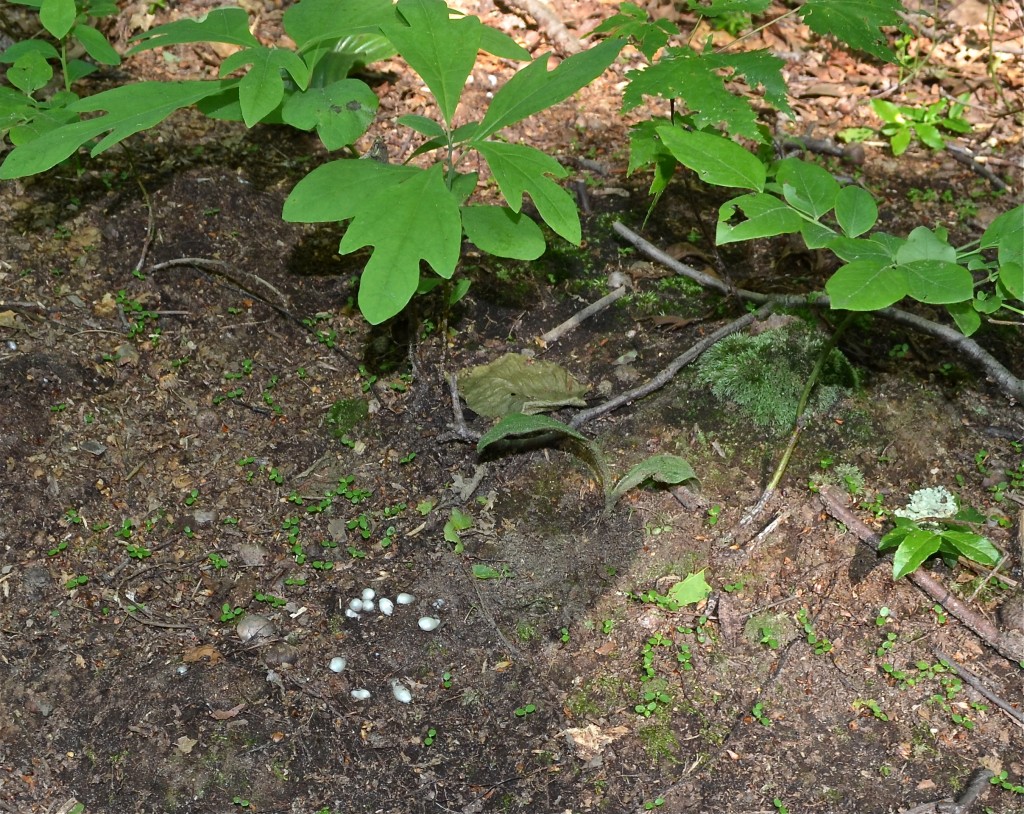
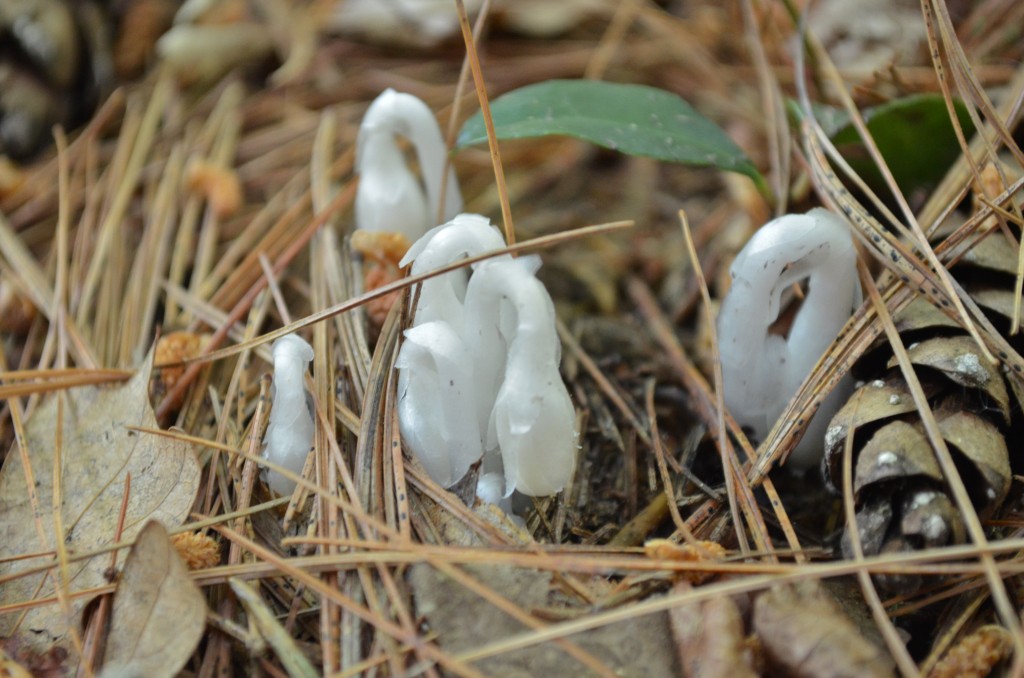
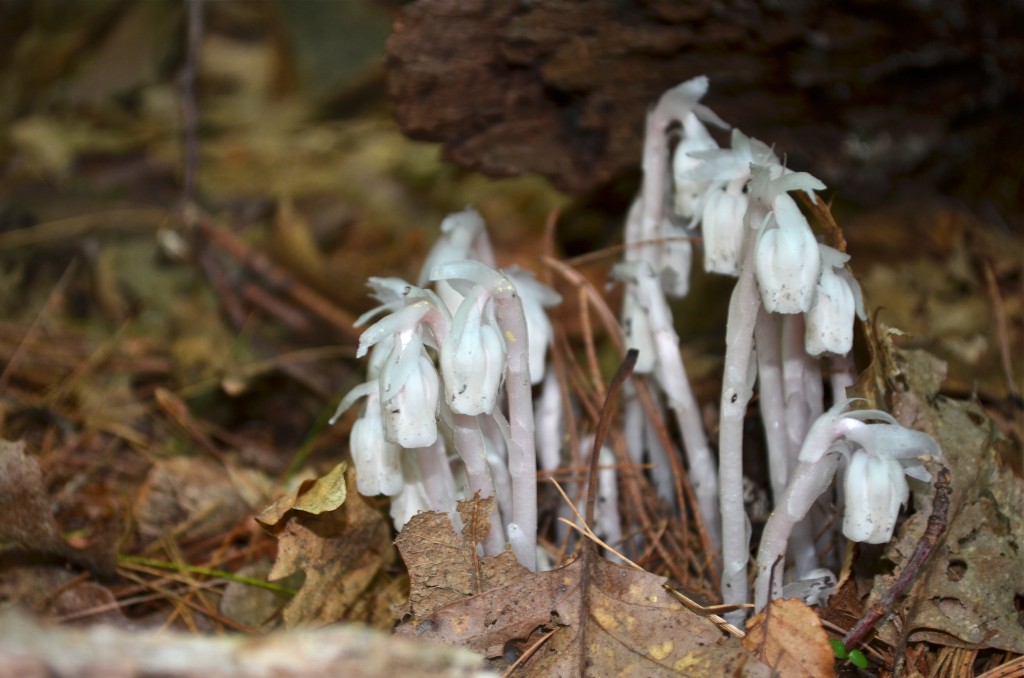
Indian Pipe is not a fungus. It’s a flowering plant related to Rhododendrons and blueberries. The flowers are pollinated by bumblebees. This plant does not have chlorophyll to make its nutrients, so it lives parasitically by tapping into fungi that live in the soil (and are obtaining THEIR nutrients from tree roots, usually beech and pines). (This is also how Ladyslipper plants get established, and it makes sense that this particular area supports a big population of both these plants–with soil full of organic matter and lots of surface litter.) So they can grow in the dark because they don’t use the sun. And, they can’t be transplanted, because they need their connection to the underground fungus, which needs its tree roots. As they age, they turn black. The name is from the way they look like little pipes stuck in the ground. According to one reference, they’re very fragrant, which seems hard to believe– and another says humans can’t detect a scent, but they attract bees nonetheless. The roots were chewed by native people to ease toothache. (Thanks to A.F. Donna for spotting these first!)
Indian Pipe, Ghost Plant, Corpse Plant (Monotropa uniflora)
Bonus picture from this hike: someone else enjoying a spot of sun.
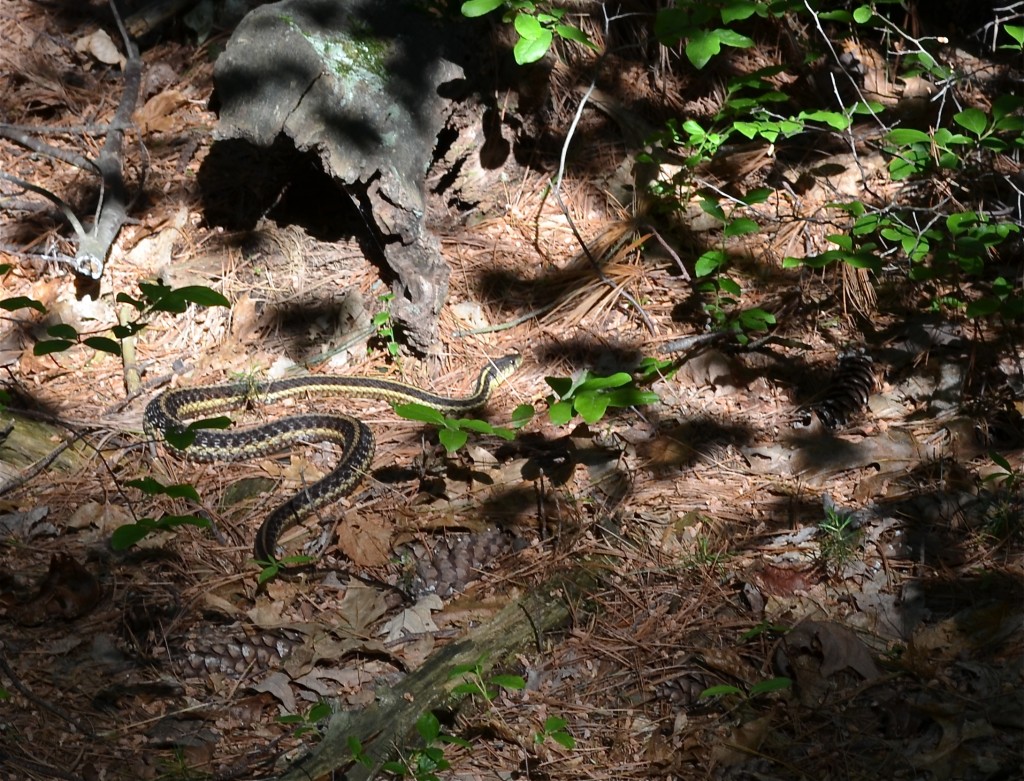
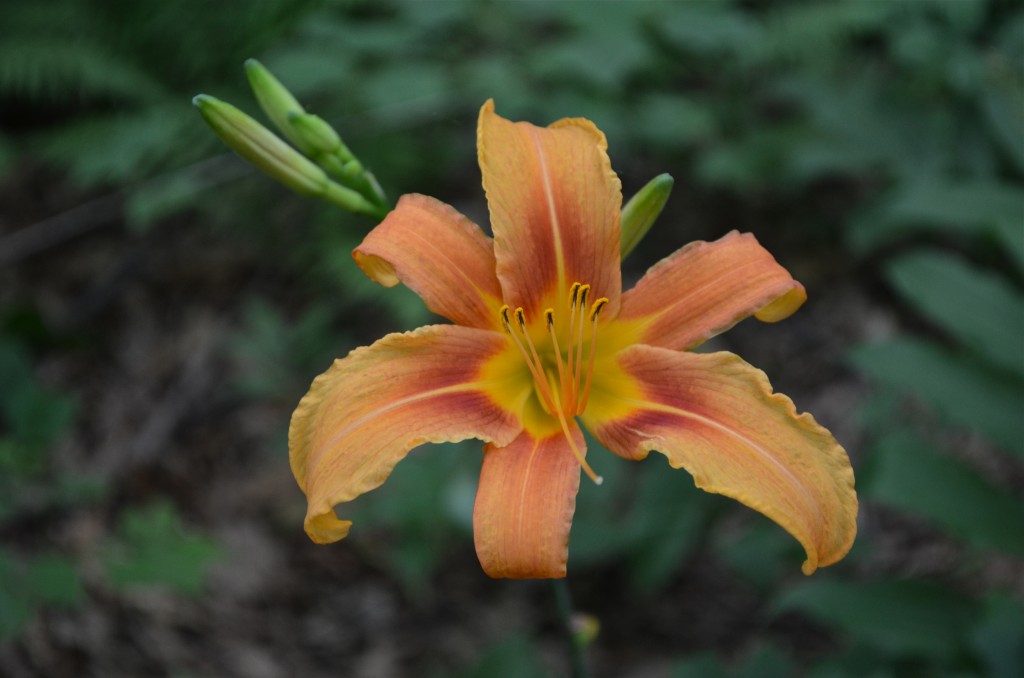 Introduced from Asia. Blooming period is about a month during midsummer, and each bloom lasts only a day. “Has been in cultivation for a long time and often outlasts the buildings that surround it and their inhabitants.” Lily Family. Thanks to Alert Flowerophile and Day Lily Queen Donna for pointing this out and assuring me it counts as wild.
Introduced from Asia. Blooming period is about a month during midsummer, and each bloom lasts only a day. “Has been in cultivation for a long time and often outlasts the buildings that surround it and their inhabitants.” Lily Family. Thanks to Alert Flowerophile and Day Lily Queen Donna for pointing this out and assuring me it counts as wild.
